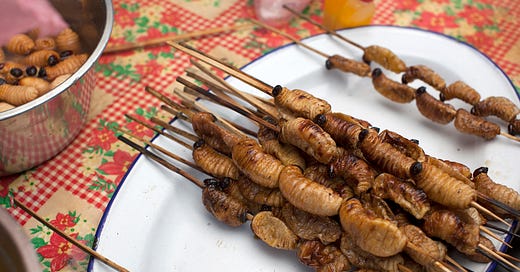A Guide to the Edible Insects of the Americas
Know your hormigas chicatanas from your hormigas culonas.
Insects have become stylish within modern gastronomy over the past few years, though throughout the Americas they have been used as a simple protein for as long as humans have walked across this hemisphere. There are thousands of edible insects that have been used in traditional cuisines throughout the Americas, which are the ones I will be focusing on here, though they are just a small fraction of the tens of millions of different insect species that are estimated to inhabit this part of the world. In other words, there are more than just a few bugs we haven’t tried to eat yet.
While the introduction of livestock such as cows, pigs and chickens in the colonial period reduced the consumption of insects in many parts of the region, in many rural areas little has changed. They are just another culinary product from this diverse collection of ecosystems and their uses are endless. They are consumed not only as a source of calories, but to add new flavors and textures to recipes. In southern Mexico and various regions of the Amazon, dozens upon dozens of insects are treated as delicacies, integral pieces of their food systems, as essential as herbs and chiles.
Despite your preconceived notions about eating insects, it’s good to think about them in terms of sustainable proteins. On average, insects need just 2kg of feed to produce 1kg of insect protein. Cattle, at the other end hand, need 8kg of feed to produce 1kg of beef. That’s a planet saving difference.
Here is my breakdown, species by species, of the different edible insects and how they are used traditionally and in some cases in modern forms, found across the region.
Keep reading with a 7-day free trial
Subscribe to New Worlder to keep reading this post and get 7 days of free access to the full post archives.




